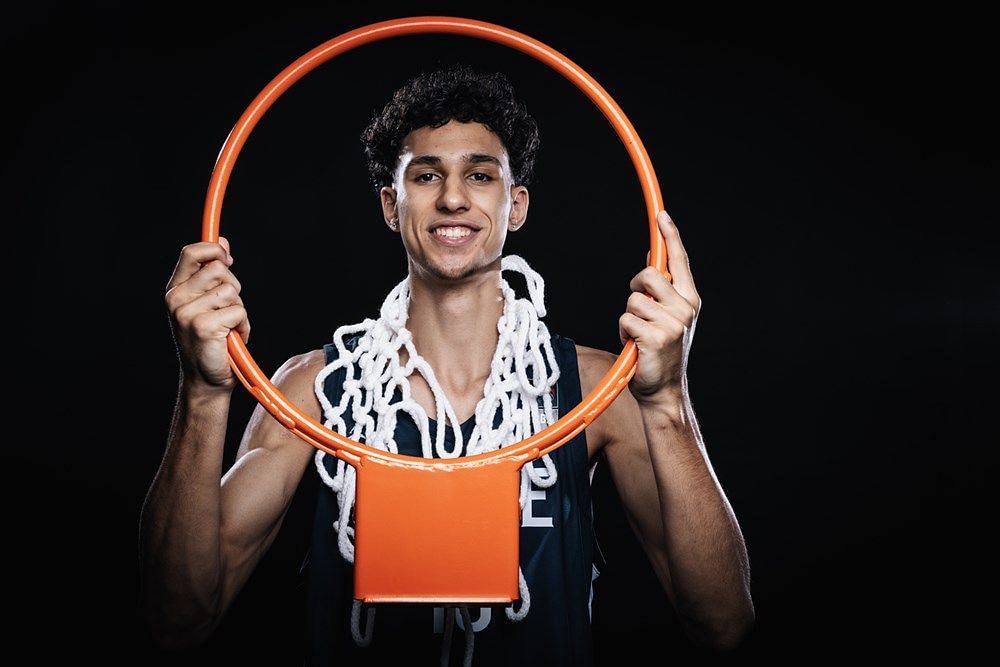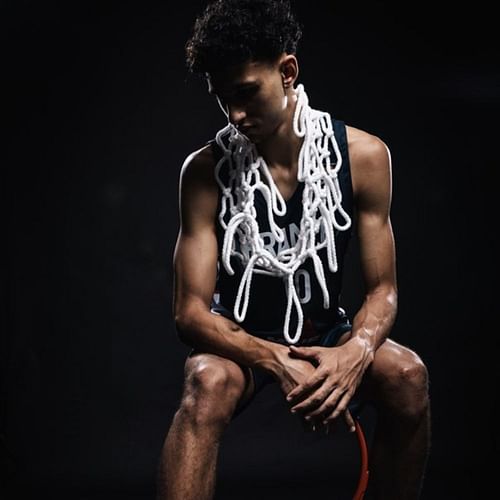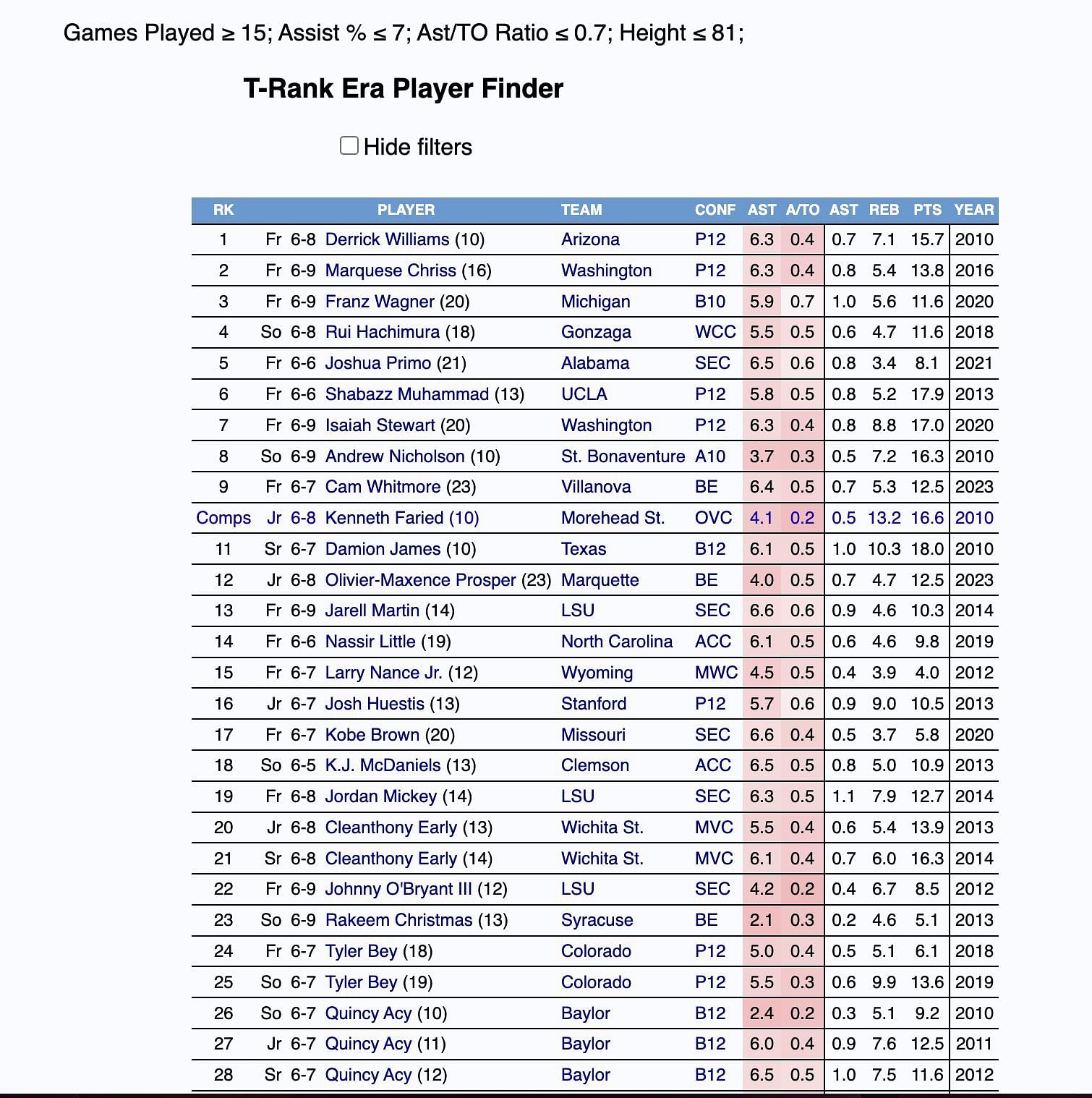
Why Zaccharie Risacher should not be no.1 in the 2024 NBA Draft
Zaccharie Risacher’s stock has risen more than any prospect late into the draft cycle. The 6’8 French Wing’s season with JL Bourg recently ended and he impacted winning in many ways. As a 19-year-old, he slashed 11 points, 0.9 assists, and 4.5 rebounds shooting 38.7% from deep with a 58.7% true shooting percentage. Risacher’s play vaulted him into the top two conversations. But is he a top-tier prospect in this class?
Some scouts view Risacher as an ideal plug-and-play wing on great teams, spacing the floor on offense and defending. In theory, Risacher fits on most teams with his skillset. However, this floor comes with a cost, as Risacher’s ceiling may be lower than most top picks. Without elite traits like athletic tools feel for the game, there’s a concern for how good Risacher can become.
Risacher’s defense kept him on the floor against professional athletes and formed the foundation of his case as a prospect. If Risacher has an elite trait, it would be his perimeter defense, largely on the ball. He glides on the ball, smoothly moving laterally to stick with handlers. His elite hip mobility, footwork and lateral quickness let him mirror and chase at the point of attack.
He’s just as lethal defending off-ball, translating his POA strengths to screen chasing and navigation. Eluding screens is of critical importance in the modern NBA given all of the movement and off-ball actions. Risacher has the agility to whip around screens and stick like glue to off-ball gunners.
Zaccharie Risacher scouting report: A defensive stalwart as a first-overall pick in the 2024 NBA Draft?
Defensive playmaking is a solid trait of Risacher’s (2.0% steal rate, 2.2% block rate) considering his excellent ground coverage on closeouts and long rotations. I worry about Risacher’s high-end defensive impact due to his strength and explosion limitations. Though he often rotates into a sound position, Risacher is too easy to score over at the rim. Adding functional strength must happen for Risacher to defend threes and fours.

T
here might not be an All-Defensive ceiling for Risacher but he’ll contribute regardless on the defensive end. I’d be surprised if Risacher wasn’t a good defender at least in due time given his impact in the French LNB Pro already. The defense will carry Risacher’s floor while we turn to the offense for the limits of his ceiling.
How good can Zaccharie Rishacher be offensively?
How good of a shooter Zaccharie Risacher will become is the central question surrounding Risacher’s evaluation. On the surface, the numbers are promising: 38.7% on 6.3 threes per 40 minutes (238 total attempts). His percentages took a leap this season; Risacher shot 31.6% from deep on 266 attempts throughout the previous two seasons. His touch indicators underwhelm: Risacher doesn’t shoot much in the mid-range and his free-throw numbers (70.7%) and half-court layup making (47.8%) are pedestrian at best.
In totality, Risacher’s shooting indicators don’t stand out as elite in any way. They’re solid to good all around though, as Risacher’s solid three-point volume and shot versatility are evident on tape. He attempted a substantial number of triples this year marking his growing track record of efficient shooting despite some inconsistency. After a 60% three-point shooting in November and a 50% December, Risacher cooled off to 30.4% in February and 21.4% in March.
Risacher primarily shoots off of the catch, hitting 40.7% of his 189 catch and shoot threes this year. With a lightning-fast release above his head, Risacher fires over contests before defenses can react. His ability to no dip and adjust his release and shot pockets are advanced mechanically and he flashes the ability to shoot off of movement, even if it’s inconsistent at this point.
Recently, Risacher’s off-dribble shooting has popped a bit more frequently. On the season, he shot just 30.4% on off-dribble jumpers. Though Risacher won’t create a ton of space given his athletic and handling limitations, he can string together some basic moves to find the little airspace he requires.
His shooting amplifies Risacher’s transition attack. He excels in the open floor, as Risacher’s athleticism — best running in a straight line and leaping in space — thrives in transition. Often busting out more audacious dribble moves and passes than he does in the half-court, Risacher is a transition weapon as a gunner and a grab-and-go initiator.
I value half-court offense much more than transition offense, though, which is where my major concerns with Risacher, especially regarding his upside, exist. Off of the ball, Risacher excels with his shotmaking and sharp cutting, and understanding of spacing to maximize opportunities. He won’t need possessions to impact winning, though Risacher struggles to create on the ball.
Risacher’s lack of a dynamic handle, strength and explosive burst limit his advantage and space creation. He struggles to burn defenders on the ball or even attack closeouts, living off of tough shots when defenses run him off of the line. These problems amplify when the court congests as pressure and contact tend to disrupt Risacher.
Playmaking statistics don’t view Risacher’s passing favorably: his 0.6 assist-to-turnover ratio and 7% assist rate are both abysmal. Very few non-bigs with Risacher’s passing profile succeed on offense with freshman Franz Wagner being the notable exception here.

Risacher’s weak handle inflates his turnover numbers, as many of his giveaways come by way of losing control of the basketball. His passing numbers slightly understate his passing ability as Risacher moves the ball quickly along the perimeter and flashes occasional off-ball playmaking. He lacks any sort of high-end vision, anticipation, or passing tools even if he’s not as much of a black hole as the stats suggest.
Because of my personal premium on the upside, I view Risacher as a mid-to-late lottery talent in this class rather than a top-two one. Though his median outcomes likely provide him a floor as a three and D role player, drafting at the top is star-seeking and there are star ceilings even in this weaker class. Without any true elite traits, athletic tools, or feel for the game, Risacher likely won’t contend for All-Star games unless he develops into a genuinely elite shooter.
Scouts who value safety will love Risacher, as his baseline of production is higher than most prospects in the class. Assuming Risacher adds muscle and stabilizes as an effective shooter, He’ll slot into most lineups and maintain a positive presence. For teams like Atlanta and Houston, that makes sense. Detroit at five (or even San Antonio at four) would be synergistic landing spots as well. Safety and risk management will come at the cost of upside, possibly passing on a needle-moving star.